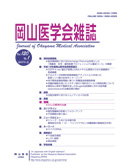

Journal of Okayama Medical Association
Published by Okayama Medical Association<Availability>
Full-text articles are available 3 years after publication.
Permalink : https://ousar.lib.okayama-u.ac.jp/17334
異臭魚の発生と石油成分の食物連鎖 第6編 石油成分の動物(ラット)への移行 ―四塩化エチレンの飼育ウナギからラットへの移行―
三宅 与志雄
岡山大学医学部公衆衛生学教室
発行日
1978-06-30
抄録
Eels were reared in the tetrachloroethylene solution (50 ppm) for 3 days. Flesh of eel were taken out and homogenizes with water (20.5 ppm tetrachloroethylene). Thereafter homogenized solution were administered to rat (10ml/Kg) orally. Concentration of tetrachloroethylene in organs of rat as time lapses were analyzed by gaschromatography with ECD detecter. The following results were obtained. 1) Tetrachloroethylene were detected in all organs tested. 2) Concentration of tetrachloroethylene in blood were decreased as time lapses and biological half life was calculated as 16 hours. 3) Similar concentration of tetrachloroethylene in muscle to that of blood were observed and biological half life was calculated as 19 hours. 4) Higher concentration of tetrachloroethylene in liver than that of blood were observed and biological half life was calculated as 5 hours. 5) The highest concentration of tetrachloroethylene among tissue tested were observed in adipose tissue. Maximum concentration was observed 6 hours after administration. The value was 10 times as much as than that of blood. The biological half life was calculated as 6 hours. 6) The effects of tetrachloroethylene on rat liver mitochondria were conducted and the decoupling action of oxidative phosphorylation was recognized.
ISSN
0030-1558
NCID
AN00032489
